The peculiar shape of bell-shaped flowers is interesting enough to be a great addition to your garden. The way that they are draped over thin stems is regarded to be very elegant.
Bell-shaped flowers are available in a wide variety of colors that are perfect to highlight any area in the garden.
Most of these bell-shaped plants require little care. Just give them good access to sunlight and moist, well-drained soil, and they will be fine.
Pollinators are easily drawn to these bell-shaped blooms and aid in crop production. In addition to that, they look great in garden beds and pots.
What we considered the 10 most beautiful bell-shaped flowers are already enumerated in this article. If you’re ready to choose one that suits your preference, then read on.
- Related Article: House Plants
1. Fuchsia Spp.
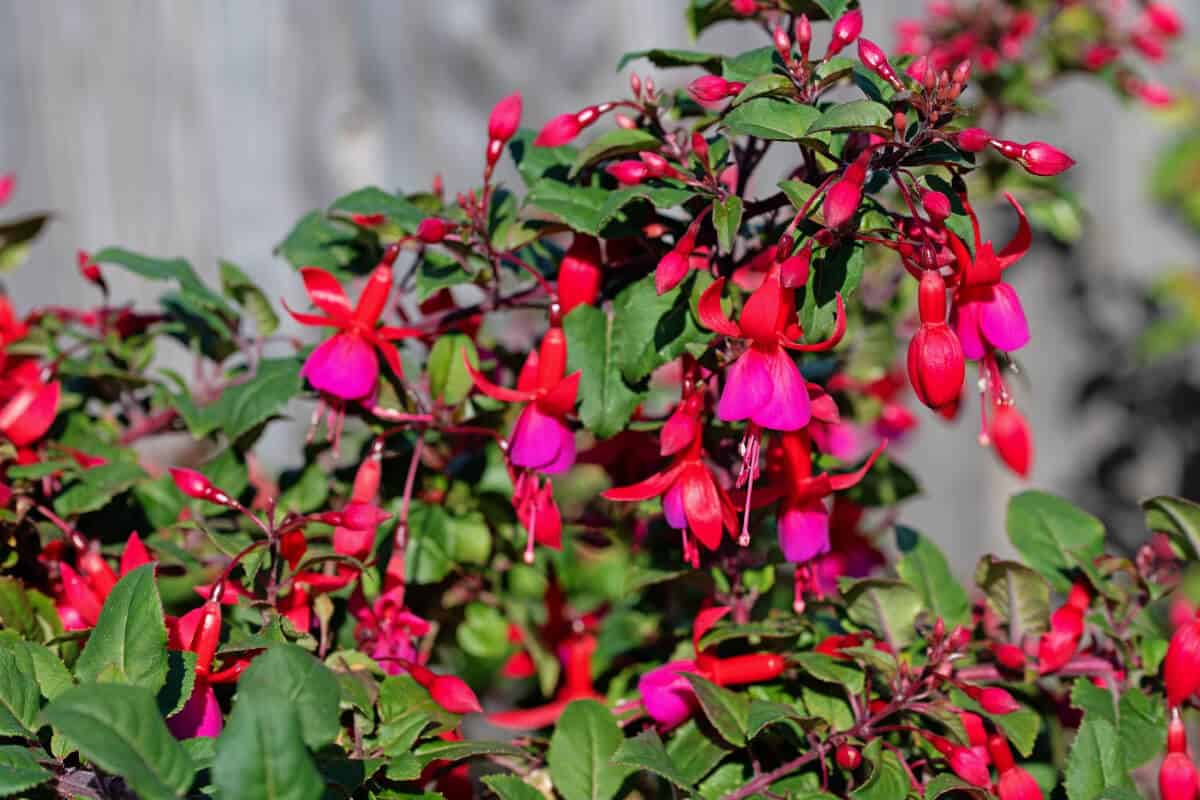
There are more than 100 species of Fuchsia plants native to Central and South America.
Fuchsias are shrubs or small trees and are quite popular in gardens as they can live for years with little care. The most common varieties have red, pink, white, or purple flowers.
They are also tolerant to a wide range of soils. Just provide some protection during hot climates as Fuchsia plants prefer cooler temperatures.
2. Bellflower (Campanula Spp.)
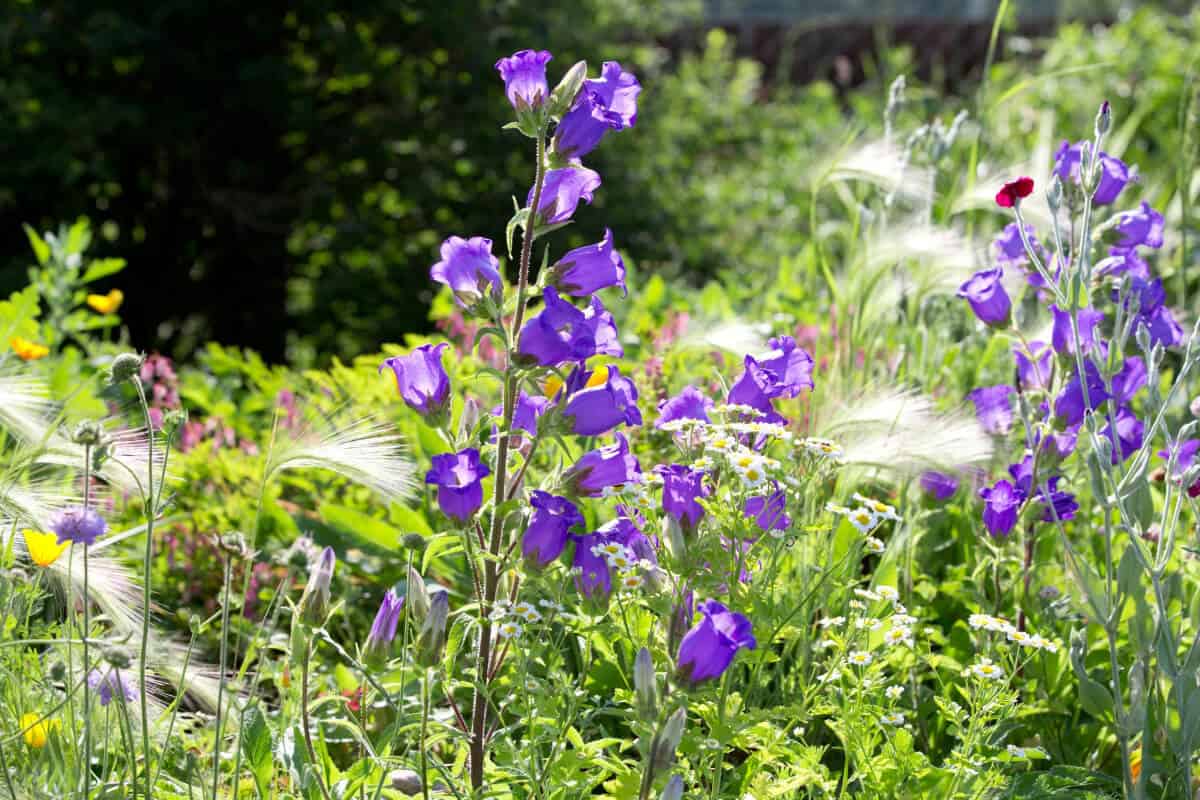
Bellflowers are perennial plants of the Campanula genus of plants which are native to regions of Europe and Asia with moderate temperatures.
Bellflowers are easy to grow both from seed and through root propagation. In order to thrive, these dainty flowers need full sun and well-draining soil.
Most bellflowers have blue and purple hues and start to bloom in July. These plants can keep on flowering until winter depending on the climate.
3. Canterbury Bell (Campanula Medium)
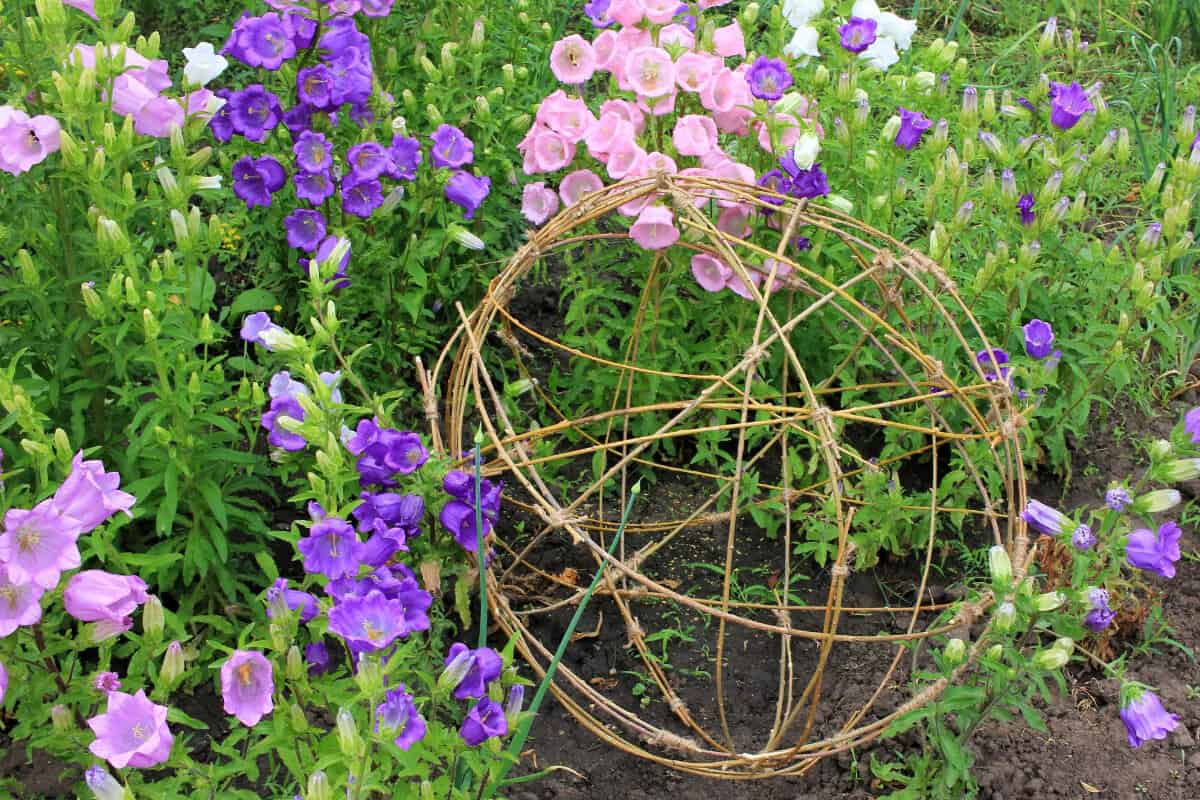
The Canterbury Bell is a species of Campanula that deserves a separate mention. This biennial plant is best known for its use in cut flower arrangements as its beautiful flowers can be quite striking, growing in full clusters on long stems.
They are usually purple in color but other varieties produce blue and pink flowers as well.
Canterbury bells have the ability to self-seed, propagating easily.
These bell flowers are adapted to cooler climates and they shouldn’t be planted in areas with strong heat or high humidity.
Canterbury Bells also get pollinated by bees and butterflies, so they will most likely attract these helpful insects to your garden.
Its maximum height is between 60 to 80 centimeters.
4. Lily of the Valley (Convallaria Majalis)
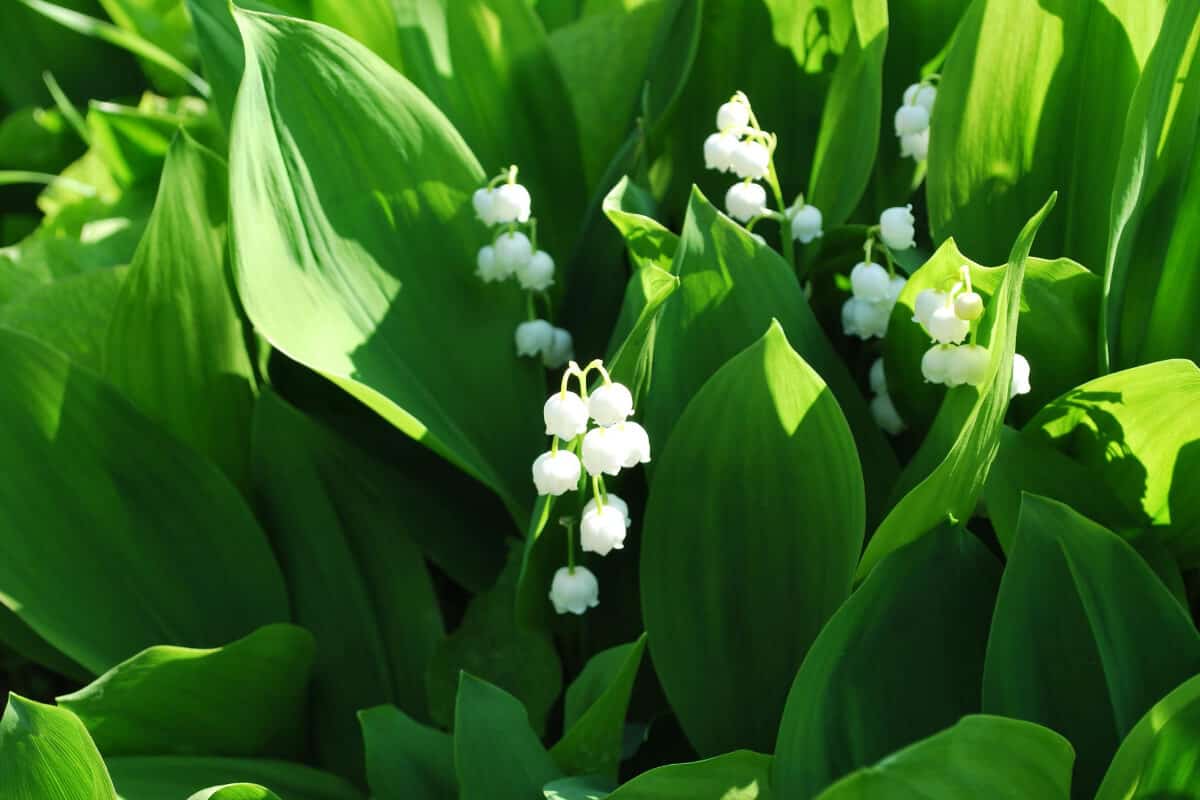
Lily of the Valley is known for its sweet fragrance.
It originally comes from the wild, temperate regions of Asia and Europe, and is commonly grown for its dangling white petals.
This flower’s small, white bell-shaped flowers stand out easily from the green foliage surrounding it.
It’s much appreciated for its ability to spread quickly in shady conditions since it propagates through underground stems called rhizomes. This is also why in some regions, it’s considered invasive.
If you live in one of these areas, you might want to look for Convallaria Majalis “Montana”, a variety native to North America.
Lily of the Valley is very poisonous, so it’s best to avoid planting it if you have small, curious children that might play in your garden.
5. Coral Bells (Heuchera Spp.)
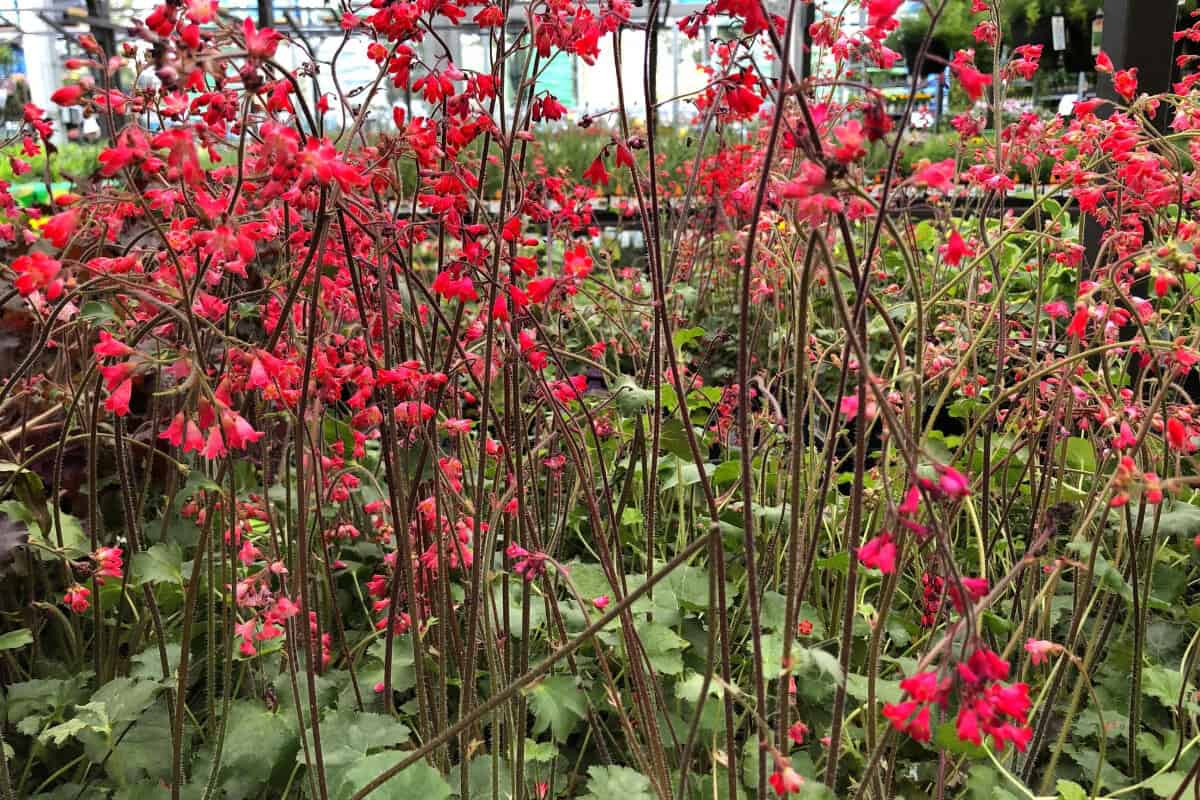
Coral Bells are beautiful perennial flowers native to North America that are much appreciated for their dainty blooms, slender stems, and stunning foliage.
This is a hardy plant that is easy to grow as they adapt excellently to a variety of sun exposures.
Its tiny bell-shaped red flowers contrast beautifully against green foliage as they bloom in late spring or early summer.
Moreover, planting Coral Bells in your garden will attract butterflies and bees, which are always beneficial.
Some cultivars of the coral bell that you can consider are:
- Citronelle Heuchera
- Dolce Cherry Truffles Heuchera
- Ginger Ale Heuchera
- Glitter Heuchera
- Lime Ruffles Heuchera
6. Foxglove (Digitalis Purpurea)
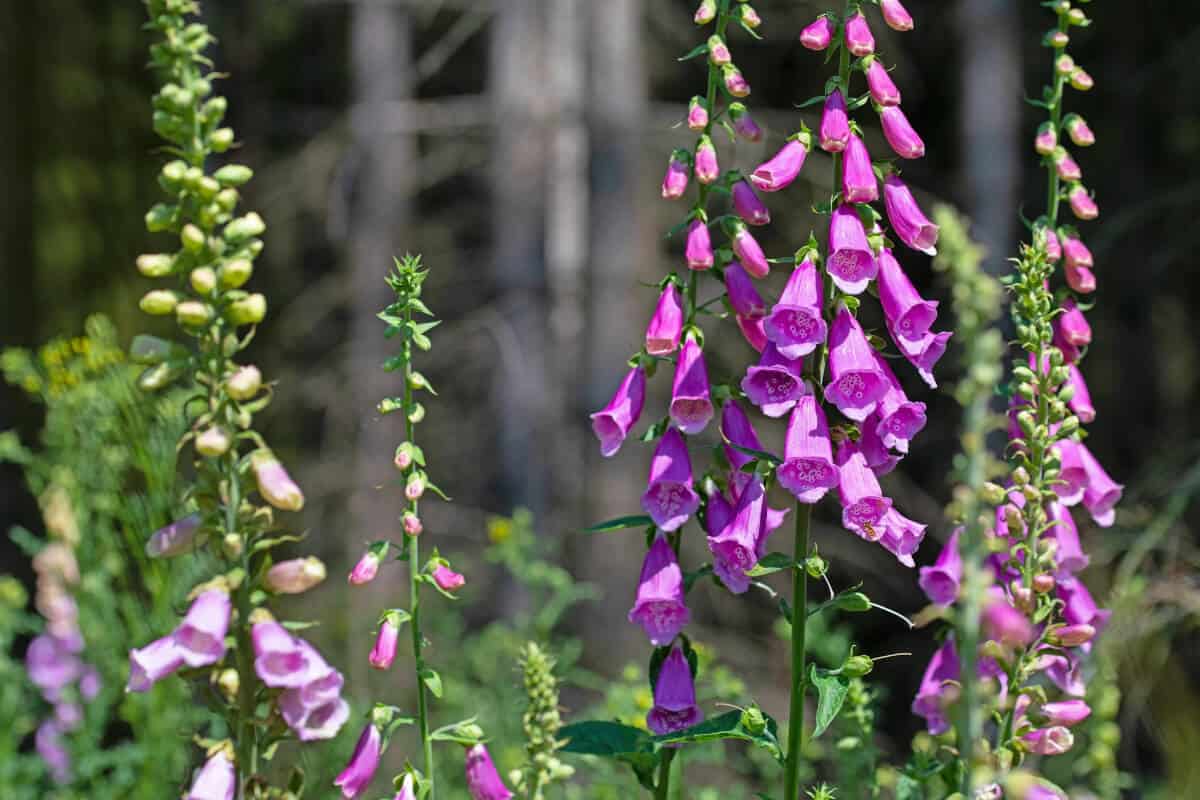
Foxglove is an easy plant to care for so it’s an excellent choice for beginners. With their tall stems that bear many large flowers in striking colors, Foxgloves always stand out.
An interesting characteristic is that these flowers fade in color as they age so on the same stalk, you can have varied colors of purple, red, yellow, and pink flowers depending on the variety.
Foxglove is particularly suited for wild gardens as deer and other wild animals won’t eat them. That’s for a good reason since these blooms are poisonous and can be dangerous for humans too.
7. Stinking Hellebore (Helleborus Foetidus)
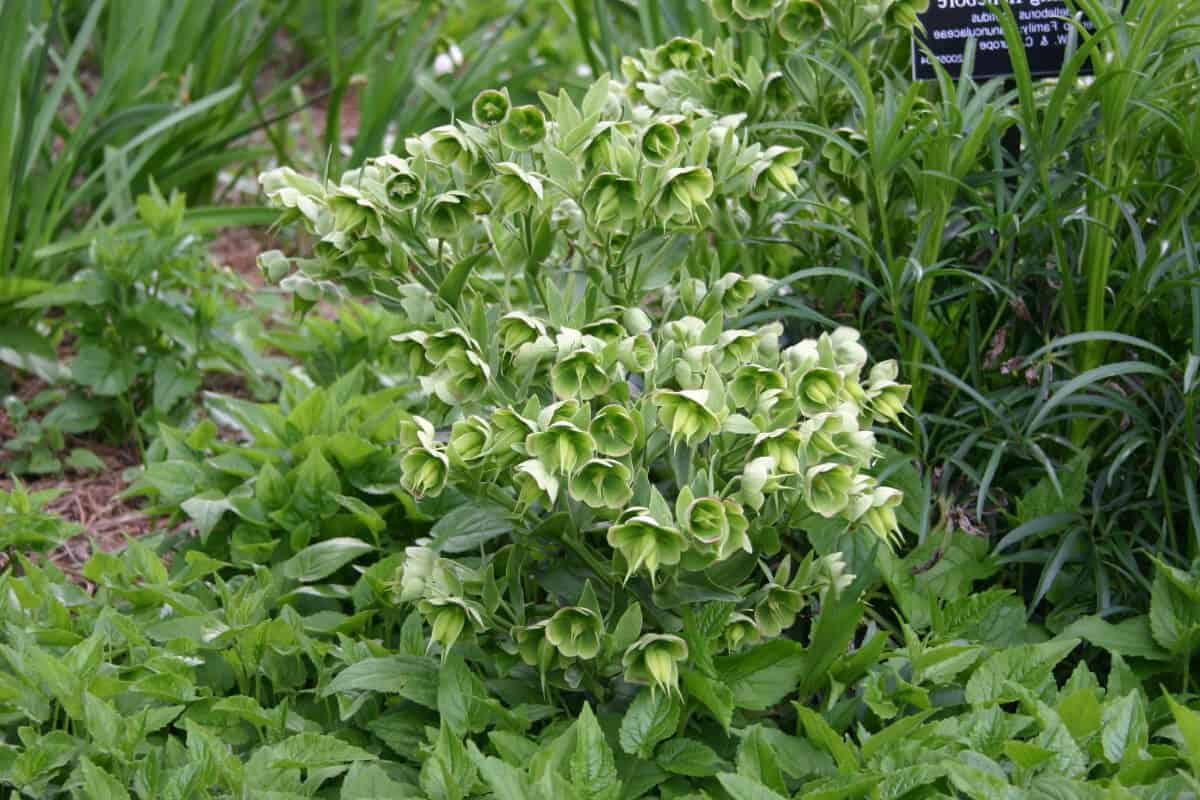
The Stinking Hellebore has earned its name because of the stench it emits when its leaves are damaged.
If you don’t let this deter you, you will find that it’s a beautiful bellflower that is also easy to grow.
The Stinking Hellebore has evergreen leaves and in the early spring, it produces pale green flowers that contrast beautifully with its reddish stems and leaves.
This plant prefers partial shade and well-draining soil. It tends to grow in clusters and is quite slow to mature. Be careful with it as it is poisonous to pets and humans.
8. Spring Snowflake (Leucojum Vernum)
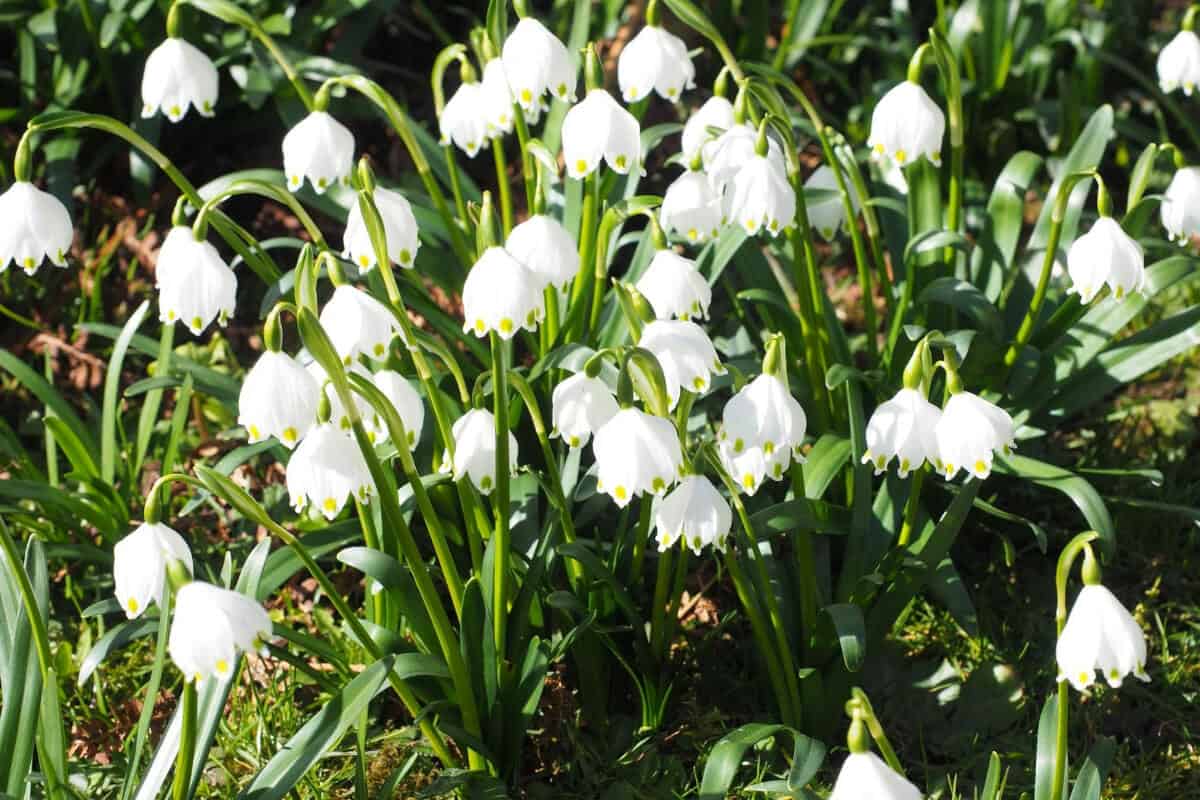
The Spring Snowflake is a perennial bulbous plant.
Its flower is composed of six tepals, each with an eye-catching yellow and green dot on the tip.
This bellflower tolerates a variety of conditions, from full sun to partial shade. It thrives in well-drained but also clay soil which makes it a popular choice among enthusiasts.
The flowers appear in early spring. Despite its beauty, this plant contains poisonous alkaloids which can cause heart problems if ingested.
9. Snowdrop (Galanthus Nivalis)
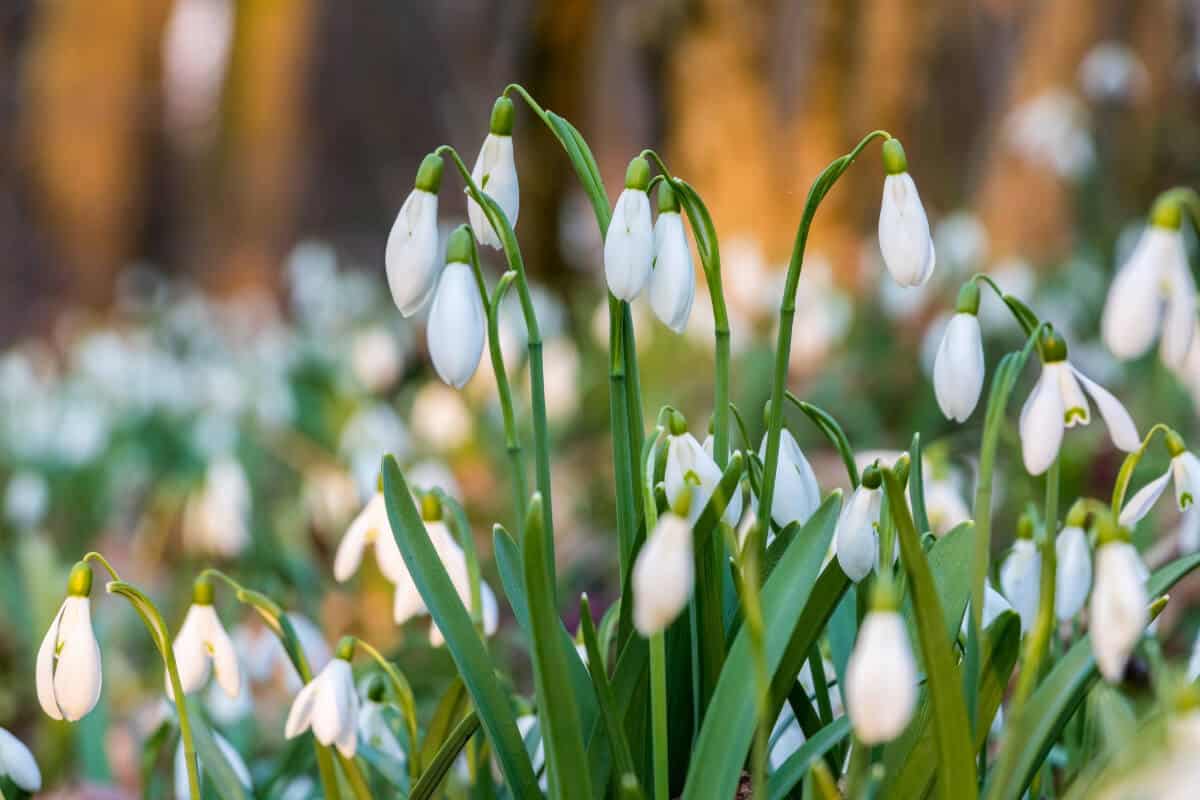
Together with the Spring Snowflake, the Snowdrop blooms in late winter or early spring and is tolerant to frost. Sometimes, snowdrops even bloom during the winter.
They are quite striking with their small, white flowers, particularly when seen in contrast with the mostly dormant vegetation in their native woodlands.
They thrive in full sun or partial shade on moist soil. Unfortunately, these flowers are also poisonous.
10. Angel’s Trumpet (Brugmansia Spp.)
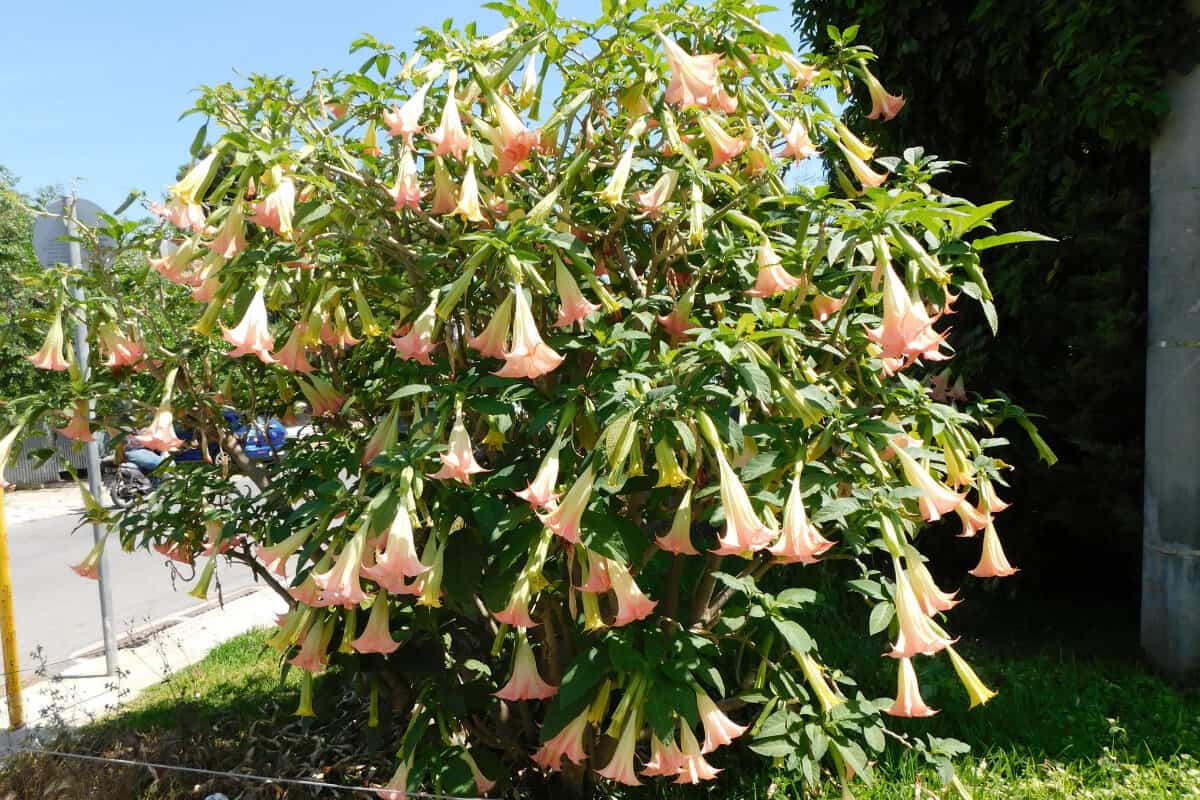
Angel’s Trumpet is well-adapted to tropical climates with plenty of space as all seven species of this plant are evergreen shrubs that are originally from South America.
This bloom can come in a wide range of colors and has huge fragrant flowers that hang down from its branches.
They are excellent to add some privacy in your garden, and will also attract hummingbirds. Take caution however as these plants are poisonous to humans.
As a tall plant, it can grow to a maximum width of 20 feet tall and a height of 30 feet tall.
11. Bonus Flower: Bluebells (Hyacinthoides)
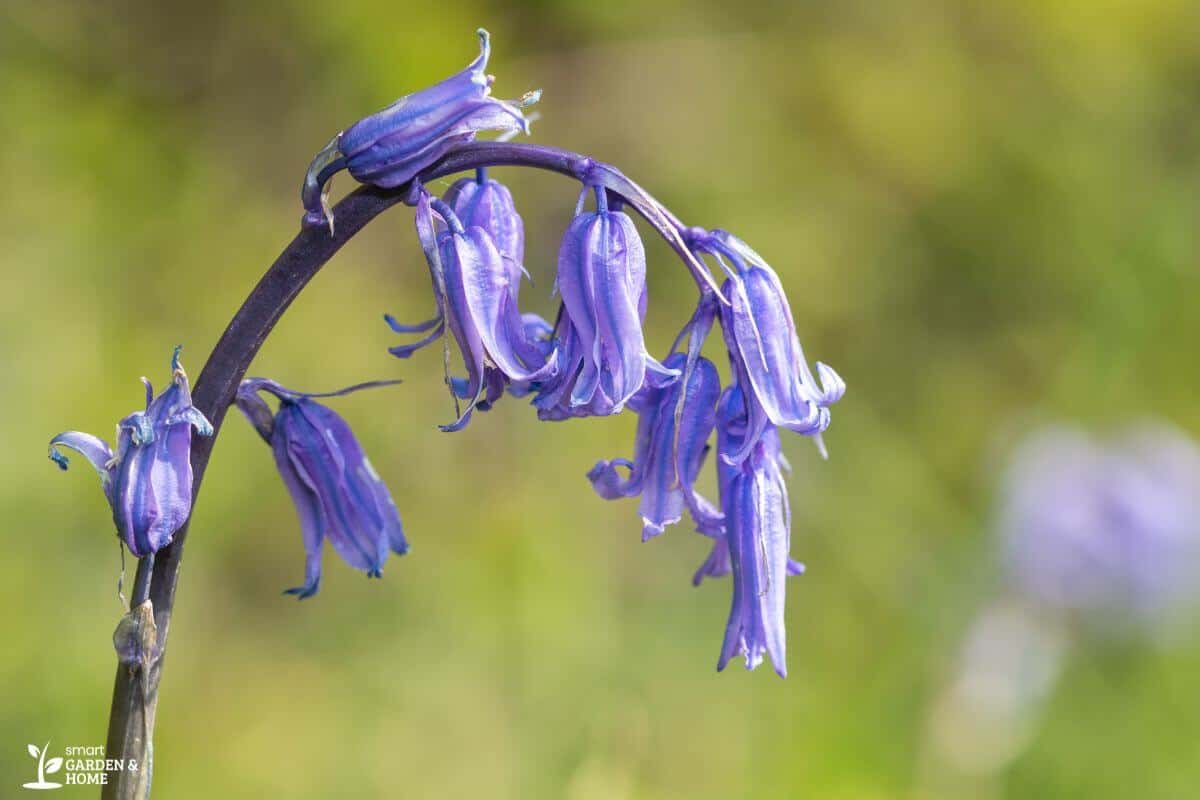
We’ll add one more flower on this list and that is the bluebell.
Other common names of this bloom are “common bluebells”, “English bluebells” or “wood hyacinths”.
This plant has an arcing stem adorned with purple bell-shaped flowers. They have a beautiful aroma that attracts many pollinators.
Bluebells are easy to grow and can be planted in late summer.
Final Thoughts on Bell-Shaped Flowers
If you are looking for something more interesting to include in your botanical garden, bell-shaped flowers are a good option.
These blooms can add charm and beauty to any landscape being visually appealing and colorful. They are great attractions to pollinators so you are sure to have bountiful success in plant pollination as well.
With proper care and maintenance, these bell shaped-flowers can bloom for months, bringing joy and color to any space.
So why not consider adding some of these beauties to your garden displays today?
To know more about flowers for your garden, check out these amazing articles:

